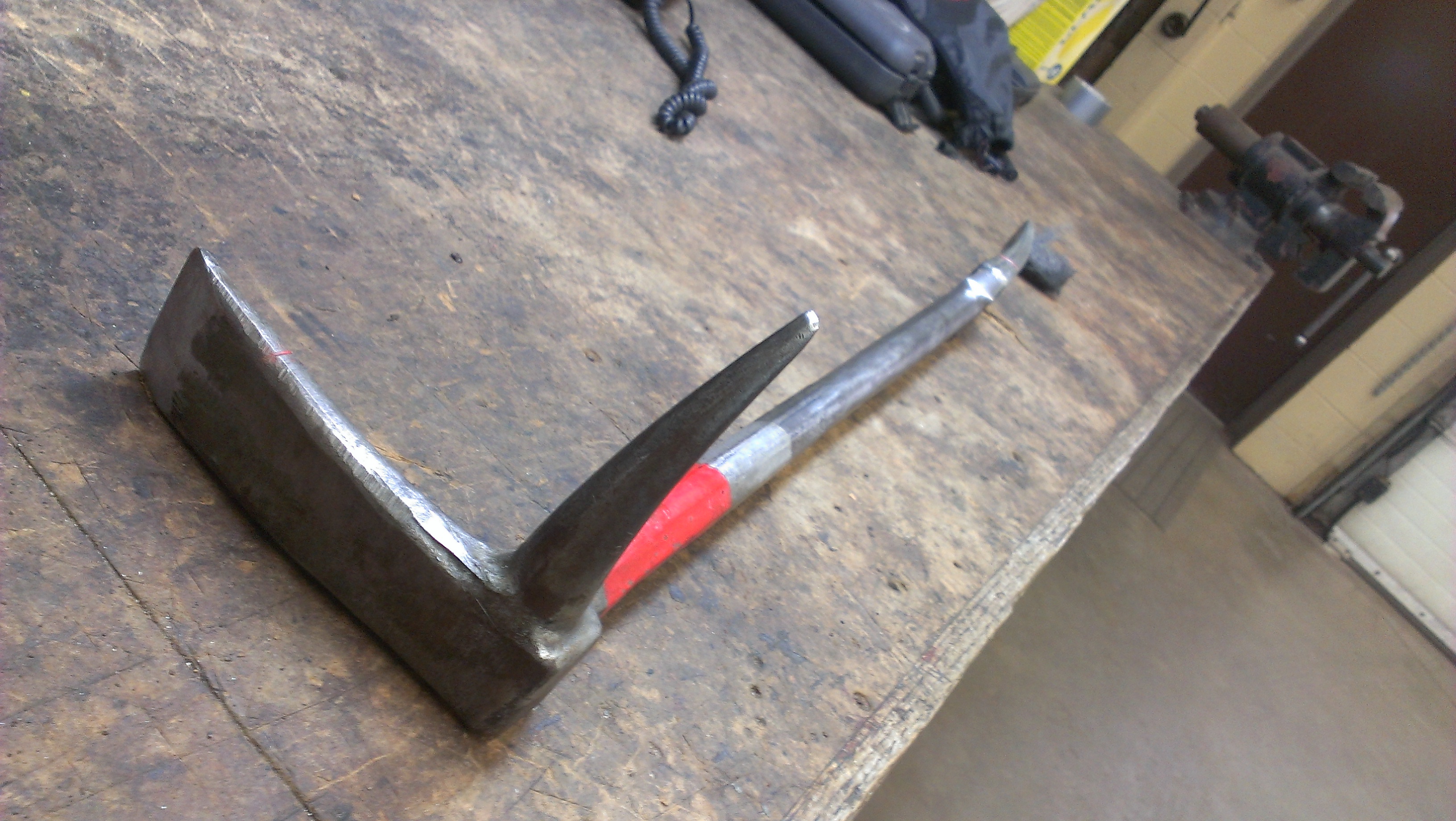|
The Pig (tool)
The pig is a specialty firefighting tool used mainly for roof ventilation, forcible entry and wall breaching. Invented by a member of the Austin Fire Department The Austin Fire Department provides fire protection and first-response emergency medical services to the city of Austin, Texas. The Austin Fire Department is the fourth largest fire department (by number of personnel) in the state of Texas. In ..., the tool combines the butt-end of a flat head axe on one side and a pick on the other. The pig can be married with a Halligan to create a forcible entry system as an alternative to the classic axe and Halligan combination. References External links * {{DEFAULTSORT:Pig (tool), The Hand tools Firefighter tools ... [...More Info...] [...Related Items...] OR: [Wikipedia] [Google] [Baidu] |
Firefighting
Firefighting is the act of extinguishing or preventing the spread of unwanted fires from threatening human lives and destroying property and the environment. A person who engages in firefighting is known as a firefighter. Firefighters typically undergo a high degree of technical training. This involves structural firefighting and wildland firefighting. Specialized training includes aircraft firefighting, shipboard firefighting, aerial firefighting, maritime firefighting, and proximity firefighting. Firefighting is a dangerous profession due to the toxic environment created by combustible materials, with major risks are smoke, oxygen deficiency, elevated temperatures, poisonous atmospheres, and violent air flows. To combat some of these risks, firefighters carry self-contained breathing apparatus. Additional hazards include falls — a constant peril while navigating unfamiliar layouts or confined spaces amid shifting debris under limited visibility – and structural collapse t ... [...More Info...] [...Related Items...] OR: [Wikipedia] [Google] [Baidu] |
Forcible Entry
Forcible entry is "the unlawful taking of possession of real property by force or threats of force or unlawful entry into or onto another's property, especially when accompanied by force". The term is also sometimes used for entry by military, police, or emergency personnel, also called breaching. For the fire service, forcible entry is defined by the International Fire Service Training Association (IFSTA) as: Breaching doorways can be differentiated as "through the lock" or "through the door" depending on the techniques used. England and Wales Forcible entry was a common law offence in England and Wales, but was abolished, along with forcible detainer, by the Criminal Law Act 1977. It was replaced with a new offence of "using violence to secure entry" under section 6 of that Act. Formerly the Forcible Entry Act 1381, chapter 2 of 15 Ric 2 (1391), the Forcible Entry Act 1429, the Forcible Entry Act 1588 and the Forcible Entry Act 1623 (repealed). Judge Donaldson considered ... [...More Info...] [...Related Items...] OR: [Wikipedia] [Google] [Baidu] |
Austin Fire Department
The Austin Fire Department provides fire protection and first-response emergency medical services to the city of Austin, Texas. The Austin Fire Department is the fourth largest fire department (by number of personnel) in the state of Texas. In total, the department is responsible for an area of and services a population of 885,400 (2013 estimate), the 11 largest city by population in the United States. History The Austin Fire Department was started in 1841 when the first fire protection organization was sanctioned by the city council consisting of a seven-man fire protection group. It was not until 1858 that the city would have a properly organized, skilled and equipped department. Stations and apparatus See also * Austin Central Fire Station 1 * Buford Tower References External links {{Authority control Fire departments in Texas Fire Fire Fire is the rapid oxidation of a material (the fuel) in the exothermic chemical process of combustion, releasing he ... [...More Info...] [...Related Items...] OR: [Wikipedia] [Google] [Baidu] |
Halligan Bar
A Halligan bar (also known as a Halligan tool or Hooligan tool) is a forcible entry tool used by firefighters. History The Halligan bar was designed by New York City Fire Department (FDNY) First Deputy Chief Hugh Halligan in 1948 and was named after him. That same year, blacksmith Peter Clarke made the first prototype of the tool. Despite its popularity among FDNY ladder companies, the department initially refrained from purchasing the tool to avoid the appearance of a conflict of interest.''Fire Department City of New York: The Bravest; An Illustrated History 1865-2002'', page 72. However, the Boston Fire Department was the first major customer of the Halligan bar, purchasing one for every fire company in the city. This led to widespread adoption of the tool, first in North America and eventually worldwide. The Halligan bar has become the most versatile hand tool for fireground tasks over the past seven decades. Design Based on the earlier Kelly tool, the Halligan is a multipur ... [...More Info...] [...Related Items...] OR: [Wikipedia] [Google] [Baidu] |
Hand Tools
A hand tool is any tool that is powered by hand rather than a motor. Categories of hand tools include wrenches, pliers, cutters, files, striking tools, struck or hammered tools, screwdrivers, vises, clamps, snips, hacksaws, drills, and knives. Outdoor tools such as garden forks, pruning shears, and rakes are additional forms of hand tools. Portable power tools are not hand tools. History Hand tools have been used by humans since the Stone Age when stones were used for hammering and cutting. During the Bronze Age tools were made by casting the copper and tin alloys. Bronze tools were sharper and harder than those made of stone. During the Iron Age iron replaced bronze, and tools became even stronger and more durable. The Romans developed tools during this period which are similar to those being produced today. In the period since the industrial revolution, the manufacture of tools has transitioned from being craftsman made to being factory produced. A large collection of ... [...More Info...] [...Related Items...] OR: [Wikipedia] [Google] [Baidu] |




